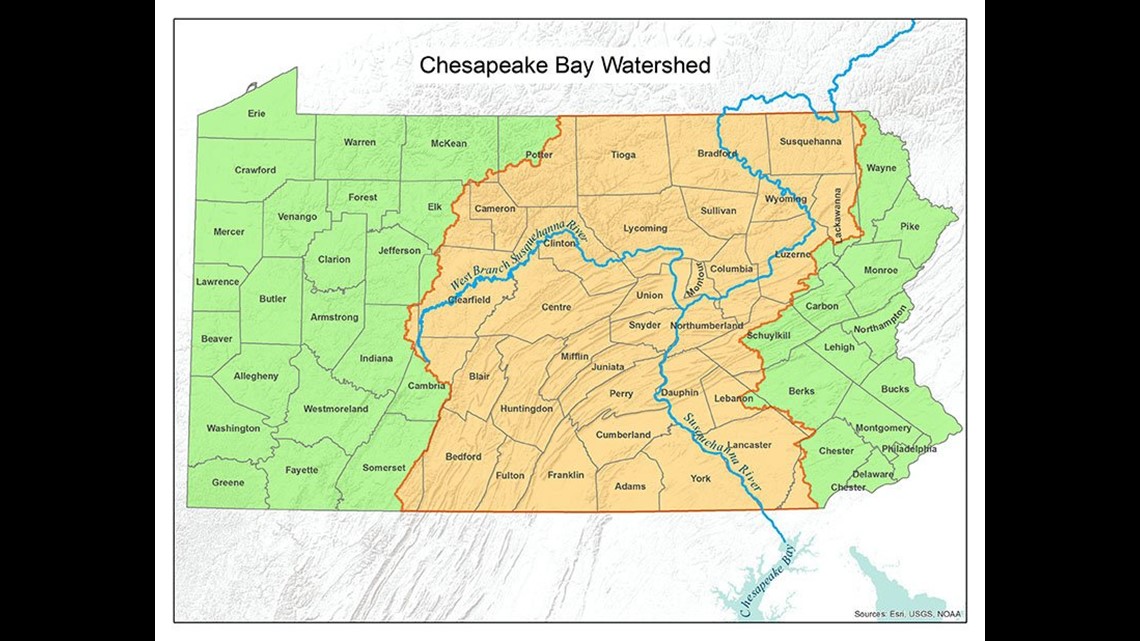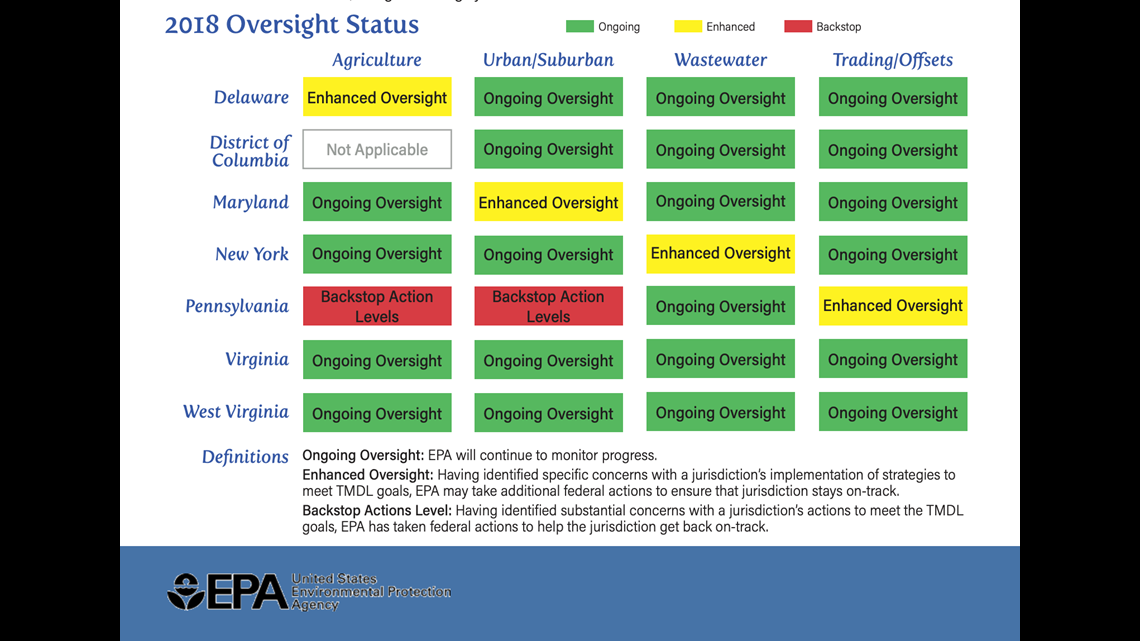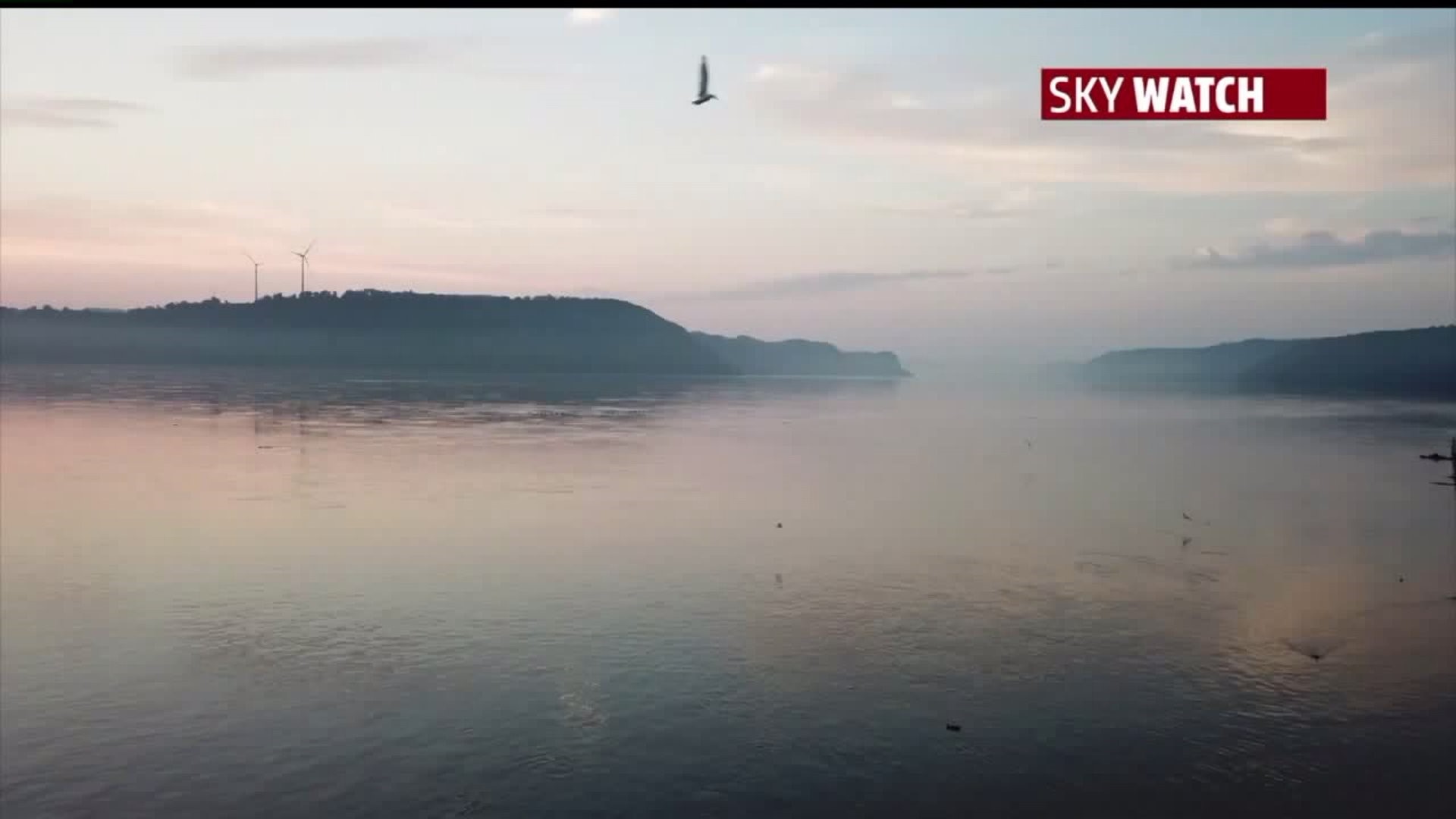HARRISBURG, Pa. — Maryland Gov. Larry Hogan directed the state's attorney general Jan. 8 to take legal action against the Commonwealth of Pennsylvania and the EPA, in an effort to force the state and the agency to take more responsibility for the pollution sent down the Susquehanna River into the Chesapeake Bay.
Pollutants run off streets, parking lots and especially farm fields. These chemicals contribute to dangerous algal blooms and habitat loss downstream.
"Pesticides, fertilizer, herbicides," said Ted Evgeniadis, lower Susquehanna riverkeeper.


In 2010 the six states of the Chesapeake Bay Watershed—Delaware, the District of Columbia, Maryland, New York, Pennsylvania, Virginia and West Virginia—agreed on a "pollution diet" known as the Chesapeake Bay Total Maximum Daily Load (TMDL) to limit the chemicals getting into the water by 2025.
Pennsylvania aimed to reduce its water pollution of nitrogen by 34 million pounds per year, phosphorus by 0.7 million pounds per year and sediment by 531 million pounds per year. So far the state has fallen short of that goal; they were less than 60 percent of the way there by the last assessment in 2018.
In his litigation request letter to Maryland Attorney General Brian Frosh, Gov. Hogan wrote,
"We have a generational responsibility to protect the Bay, and we simply cannot afford to fall short of these shared obligations."


According to the letter, the EPA is also at fault for not enforcing the 2010 agreement. However the EPA defended its position Jan. 10, writing in a statement the 2025 goals were always an "informational tool" rather than a binding resolution:
"EPA recognizes the Chesapeake Bay as a unique and important national resource and takes the Bay TMDL very seriously. EPA is fully committed to the Chesapeake Bay program and maintains its strong commitment to restoring the Bay... The question of whether the TMDL itself is enforceable by a court was answered by the previous administration in court filings defending the Bay TMDL. In 2016, the Obama Administration told the U.S. Supreme Court that a TMDL is an informational tool that 'does not impose any binding implementation requirements on the States,' and that 'the Bay TMDL does not directly regulate any sources or require any permits.' The Trump Administration agrees with these statements from the prior administration."
Chesapeake Bay groups urged Pennsylvania to reduce its pollution regardless.
"Pennsylvania needs to take these expectations seriously and proceed forward as if they were enforceable," said Jenna Mitchell, Pennsylvania director of the Alliance for the Chesapeake Bay.
Lack of funding has been a main reason behind Pennsylvania not reaching its pollution reduction commitments. The state's current plan falls short more than $300 million each year.
Pennsylvania Gov. Tom Wolf has been pushing for more investment in clean water. His office wrote in a statement,
"Instead of protracted litigation that will take resources away from our efforts to improve water quality in the watershed and undermine the partnership that has helped make progress, Governor Hogan`s time would be better spent convincing his Republican counterparts in Pennsylvania to support Governor Wolf`s plan."
The Chesapeake Watershed would benefit most from a more cooperative approach between Maryland and Pennsylvania, said watershed advocates.
"If we were able to find solutions that work for everyone I think we would end up further than litigating," Mitchell said.
Advocates also warned any measures addressing water runoff and watershed health can require years to take effect.

